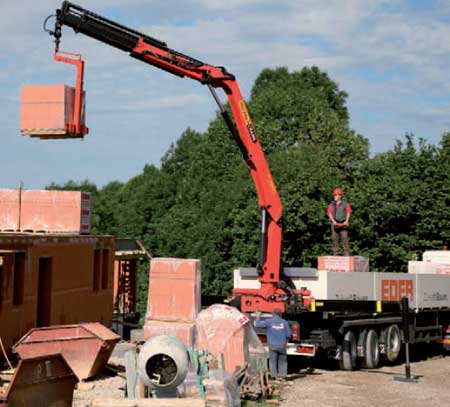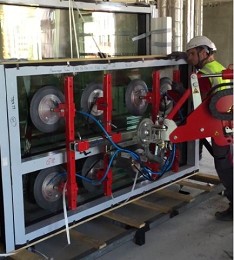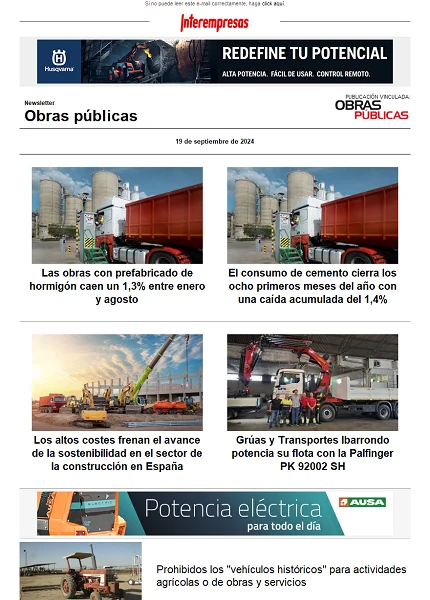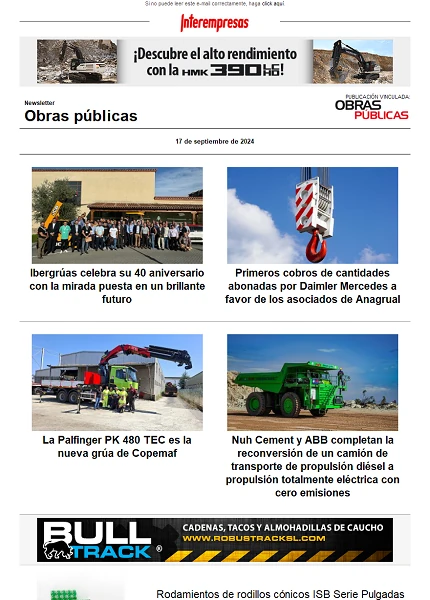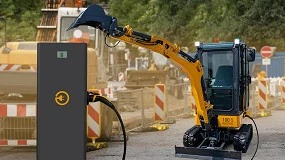Training of operators of articulated hydraulic cranes
April 23, 2010
Some examples of differences, quite a few I think are important for example that the cats of the self-propelled rise up the chassis of the vehicle, being this banned in articulated hydraulic cranes as they could produce the rupture of the cats and the overturning of the team. In the articulated hydraulic cranes own chassis is part of the support points, while the cranes, they are rigid arm and non-articulated, being its very different movements and therefore his diagrams of loads, and can only use winchWhile the articulated hydraulic cranes, various accessories (abrecontenedores, spoons, octopuses, systems of suction cups, etc.) as well as winch can be used.

Hydraulic cranes articulated most are managed by remote control by radio, the self-propelled in its vast majority, not to say all, with the operator and the visibility of the work in many cases is therefore null and void. To also support the exclusion of the card, always take the same example. Chapter 1 of the course of operator of cranes, which empowers a person without experience (work) to work from the first day with the crane self-propelled, if it has passed the examination, specify:
Once arrived at la campa, positioned team, extended stabilizers, lift chassis and stabilize the team, go up to the cabin, define counterweights, extended arm of prolongas and to work. If this card, as it is defining for some services on prevention, which is also requested an articulated crane operator, it could occur in this work need to be using an articulated crane and the Security Coordinator authorized by a worker with self-propelled card to operate the equipment (which until now had never used it)(, but as it has card, therefore to work!):
If an accident occurs, who is responsible?. The entrepreneur, team, or of the Security Coordinator who has authorized to manipulate an operator with the card of self-propelled crane another type of different work team. I leave the question in the air. According to the definition of qualifications: preparation to exercise certain activity or profession, the question we must ask ourselves now is what we need to exercise our profession of articulated hydraulic crane operator?
Appropriate training
The first point, we have clear, driver's license truck, driving licence, is a complement to the training that we want to define, if the operator of the crane is also the driver of the vehicle and want to move the team to the workplace. Secondly, as specified us the Ministry of industry and, although there is a part in common is that the theory of the elevation and eslingado cargo, a self-propelled crane is completely different to an articulated hydraulic crane and therefore self-propelled crane operator card not enables the management of the articulated hydraulic crane. The third, also clear, and that is if there is no formal training, according to a complementary technique instruction for an articulated hydraulic crane operator, the reference legislation, Royal Decree 1215 / 1997 of 18 July, which establishes the minimum requirements for safety and health for the use by workers of the teams working and giving conformity to law 31/1995 of 8 November of occupational risk prevention.

The Royal Decree 1215 / 1997 provides in article 5 of the "obligations in the field of training and information", and so we entirely reproduce below, because of its importance:
1. In accordance with articles 18 and 19 of the law on prevention of occupational risks, the employer shall ensure that the workers and representatives of workers receive training and information appropriate to the risks arising from the use of work equipment, as well as on the steps prevention and protection to be taken in implementation of the present Royal Decree.
2. The information, preferably in writing, shall contain, at a minimum, the particulars of a:
a. / conditions and correct form of use of work equipment, taking into account the manufacturer's instructions, as well as the situations or abnormal and dangerous forms of use that can be expected.
b / the conclusions which, if any, can be of the experience gained in the use of work equipment.
c. / any other preventive useful information.
The information must be comprehensible to the workers for whom it is directed to include or presented in the form of fact sheets as required by its volume, complexity or the rare use of the equipment. Informative documentation supplied by the manufacturer will be available to workers.
3. Similarly, informed the workers on the need to pay attention to the risks arising from work equipment present in their environment of immediate work, or the amendments in them, even if you do not use them directly.
As major points of article 5, he would summarize as follows:
A) the employer shall ensure that workers receive adequate on risks and prevention the formation and information derived from his team, by
Therefore, in our case, the articulated hydraulic crane operator has to be trained and informed.
(B) the information must be in writing and at the very least should be, for the content of the points a, b and c seen previously, as specified in the Manual of use of the manufacturer, which has been the team who designed and knows it perfectly.
(C) how it should be understandable, all documentation must be at least in Spanish, without prejudice to the co-official languages.
(D) the Manual of use always must go with the machine so that the operator can consult it wherever it deems it necessary.
(E) of the new machinery directive 2006/42/EC, I take the time because it fits the commentary here, we get this in their annex I: "the manufacturer or his authorised representative shall: determine the limits of the machine, including the intended use and its reasonably foreseeable misuse".

By paragraph 3 reflected is that not only have to learn and be trained on our team, but also by the work environment. After reading this newsletter here, we find that there are responsibilities for all, the manufacturer of the equipment must provide a secure machine and documentation with the risks inherent in its staff and the employer must ensure, keep the team in the same conditions of security that in its first entry into service. It must also have informed all its workers on the risks arising from the use of the team and of the operator in compliance with the provisions of security that has been studied in its formation, because, but nothing would serve as the above.
If from here, we believe that the equipment complies with the specifications of safety for which has been designed and therefore the manufacturer delivers the EC declaration of conformity, performs the CE marking on the machine, the businessman maintained under the same conditions of security that in its first implementation of service according to the article 3 item 5 of the Royal Decree 1215 / 1997, with proper maintenance, then only we would define which is the information and theoretical training and practice, sufficient and appropriate to that defined articles 18 and 19 of the law on prevention of occupational risks. To not be formal training, is very open to interpretation which is the training and information that does comply with the legislation, I have made a proposal that I've tried, extend it by the largest number of competent agencies in the field of training, but can be other persons or bodies to define another and would be as valid as that will try to explain now. View of the risks inherent in the use of our cranes.
If I realise a vision of how are the inherent risks in the utilisation of our type of cranes, find me three possibilities or modules in where I go to try place them:
# Module 1: The risks of the own machine, as for example the positioning in the campa and his stabilisation, which influence has the not “extending” totally the cats, the knowledge
of the compactación of the floor and the need to increase the surfaces of support, the dangers by the vicinity of the works to an electrical network, the knowledge of the controls of the team, main valves, reading of the diagrams of load and a long etcetera. We could say that this section defines the risks until the hook of load.
# Module 2: The second part, that is what occurs from the hook or accessory until the load. This would be the part of eslingado, chains etc., and subjection of loads. How it is necessary to realise it, how it is necessary to keep these useful so that no deterioren, or when it is necessary to withdraw them because they are
defective. Understand how it is necessary to read his fichas technical and his distributions of loads, how it is necessary to attach the loads and in where has to position the operator when it raise the
load if this is in the box of the truck or when goes to disassemble a structure, etc.
# Module 3: and a third module that would include the surroundings of work, where are working, which machines have next, etc.
